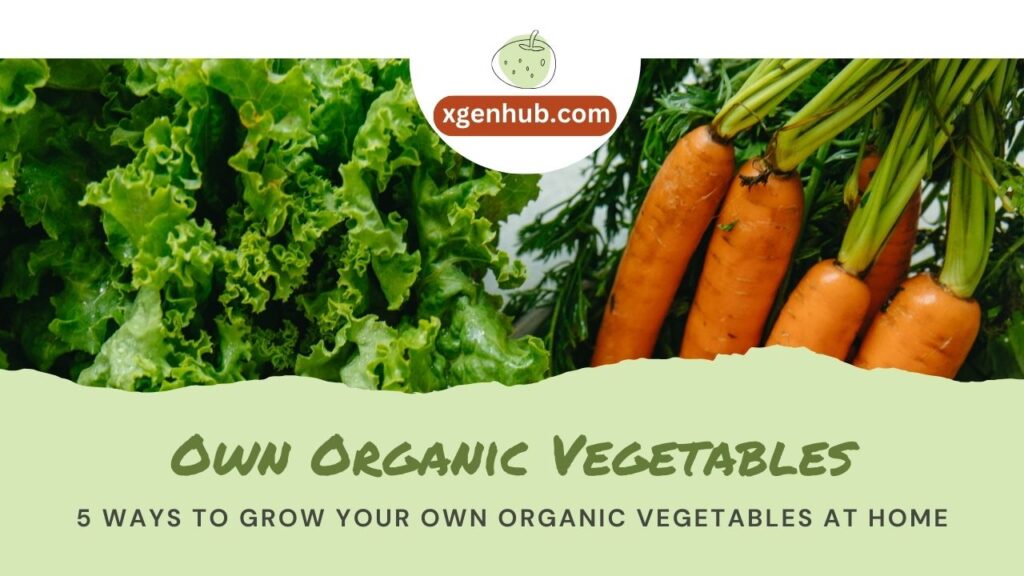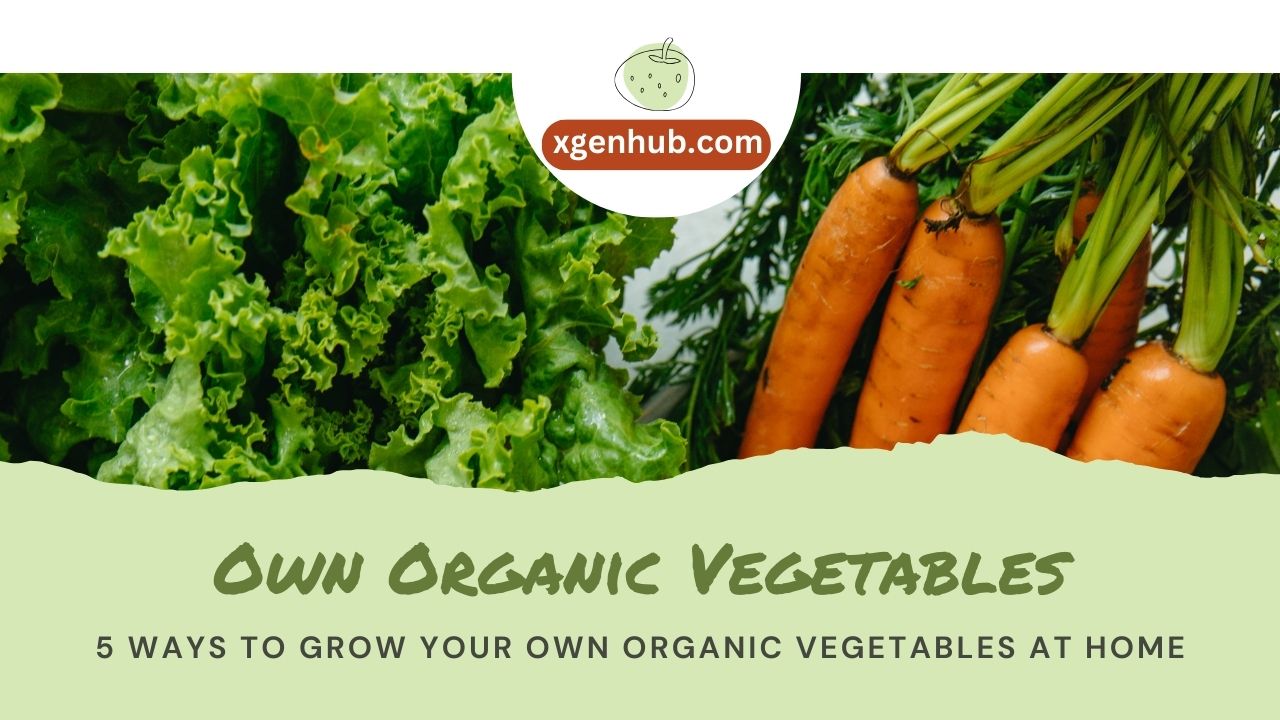Growing your own organic vegetables at home is not only a rewarding hobby but also a way to ensure that you have access to fresh, healthy produce right at your doorstep. In this comprehensive guide, we’ll explore five effective methods to cultivate your own organic vegetables, each brimming with detailed insights and tips to help you succeed. By implementing these strategies, you can enjoy the benefits of organic gardening, including improved nutrition, reduced environmental impact, and the satisfaction of nurturing your own food.

1. Understanding the Basics of Organic Gardening
Before diving into the methods of growing organic vegetables, it’s essential to grasp the fundamentals of organic gardening. Organic gardening focuses on growing plants without the use of synthetic pesticides, herbicides, or fertilizers. Instead, it employs natural processes and materials to promote plant health and productivity.
Unlock Your Online Success! Watch Our Exclusive Video for FREE and Start Earning Today!

Benefits of Organic Gardening
- Healthier Produce: Organic vegetables are often richer in nutrients and free from harmful chemicals.
- Environmental Sustainability: Organic practices help preserve biodiversity and soil health.
- Cost-Effective: Growing your own vegetables can significantly reduce grocery bills.
Essential Principles
- Soil Health: Healthy soil is the foundation of a successful garden. Incorporate organic matter like compost to enhance soil fertility.
- Biodiversity: Encourage a diverse ecosystem in your garden to attract beneficial insects and pollinators.
- Natural Pest Control: Use companion planting and organic repellents to manage pests without chemicals.
2. Selecting the Right Location
Choosing the ideal location for your organic vegetable garden is crucial for maximizing growth and yield. Here are some key factors to consider:
Unlock Your Online Success! Watch Our Exclusive Video for FREE and Start Earning Today!

Sunlight
Most vegetables require at least 6-8 hours of direct sunlight daily. Observe your potential garden site throughout the day to identify sunny spots.
Accessibility
Ensure your garden is easily accessible for regular maintenance tasks like watering, harvesting, and weeding.
Drainage
Good drainage is essential to prevent waterlogging, which can harm plant roots. If your yard has poor drainage, consider raised beds.
Proximity to Water
Having a water source nearby simplifies the irrigation process, ensuring your plants receive adequate moisture.
3. Choosing the Right Vegetables for Your Climate
Selecting the right vegetables based on your local climate and growing season is vital for successful organic gardening. Research your USDA Plant Hardiness Zone to understand which vegetables thrive in your area.
Unlock Your Online Success! Watch Our Exclusive Video for FREE and Start Earning Today!

Cool-Season vs. Warm-Season Crops
- Cool-Season Vegetables: These thrive in spring and fall and include crops like lettuce, spinach, and peas. They can tolerate light frost.
- Warm-Season Vegetables: Best planted after the last frost, these include tomatoes, peppers, and cucumbers, requiring warm soil for optimal growth.
Companion Planting
Incorporate companion planting techniques to enhance growth and repel pests. For instance, plant marigolds alongside vegetables to deter nematodes.
4. Soil Preparation and Amendments
Preparing the soil is one of the most critical steps in organic gardening. Healthy soil provides essential nutrients, improves drainage, and supports beneficial microorganisms.
Unlock Your Online Success! Watch Our Exclusive Video for FREE and Start Earning Today!

Testing Your Soil
Conduct a soil test to assess pH, nutrient levels, and organic matter content. This information helps determine necessary amendments.
Organic Amendments
- Compost: Enriches soil with nutrients and improves texture. Aim for a ratio of one part compost to three parts soil.
- Mulch: Retains moisture, suppresses weeds, and gradually adds nutrients as it decomposes.
- Green Manure: Plant cover crops like clover or rye during off-seasons to enhance soil fertility.
5. Watering and Maintenance Techniques
Proper watering and ongoing maintenance are crucial for the health of your organic vegetable garden. Here are essential practices to keep in mind:
Unlock Your Online Success! Watch Our Exclusive Video for FREE and Start Earning Today!

Watering Techniques
- Deep Watering: Water deeply and less frequently to encourage deep root growth. Aim for 1-2 inches of water per week, depending on rainfall.
- Drip Irrigation: Consider installing a drip irrigation system to deliver water directly to plant roots, reducing evaporation and water waste.
Weeding
Regularly check for weeds, as they compete for nutrients and water. Use mulch to suppress weed growth and make manual weeding easier.
Pest Management
Monitor your garden for pests and diseases. Use organic methods like neem oil, insecticidal soap, or natural predators (e.g., ladybugs) to manage infestations.
Conclusion
Growing your own organic vegetables at home is a fulfilling journey that provides numerous benefits for both your health and the environment. By understanding the principles of organic gardening, selecting the right location, choosing suitable vegetables, preparing your soil, and maintaining your garden effectively, you can enjoy a bountiful harvest of fresh, nutritious produce. Embrace the process, stay patient, and soon you’ll experience the joys of harvesting your very own organic vegetables, all while contributing to a more sustainable future.
By implementing these five ways to grow your own organic vegetables at home, you not only foster a healthier lifestyle but also contribute positively to the planet. Start your organic gardening journey today and reap the benefits for years to come!
